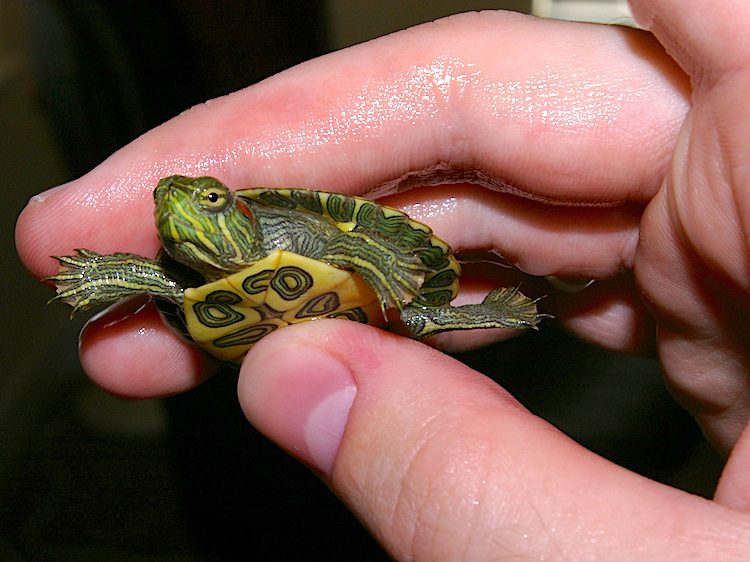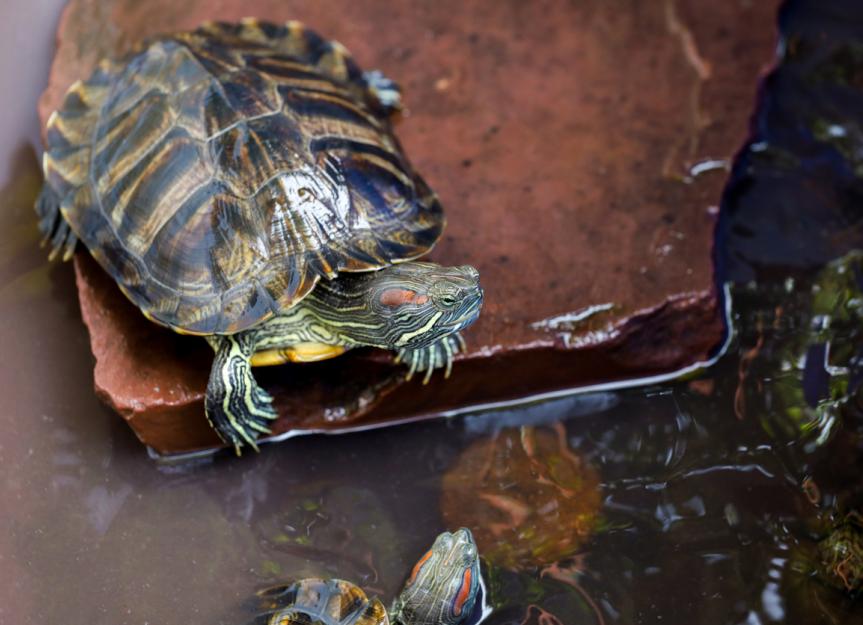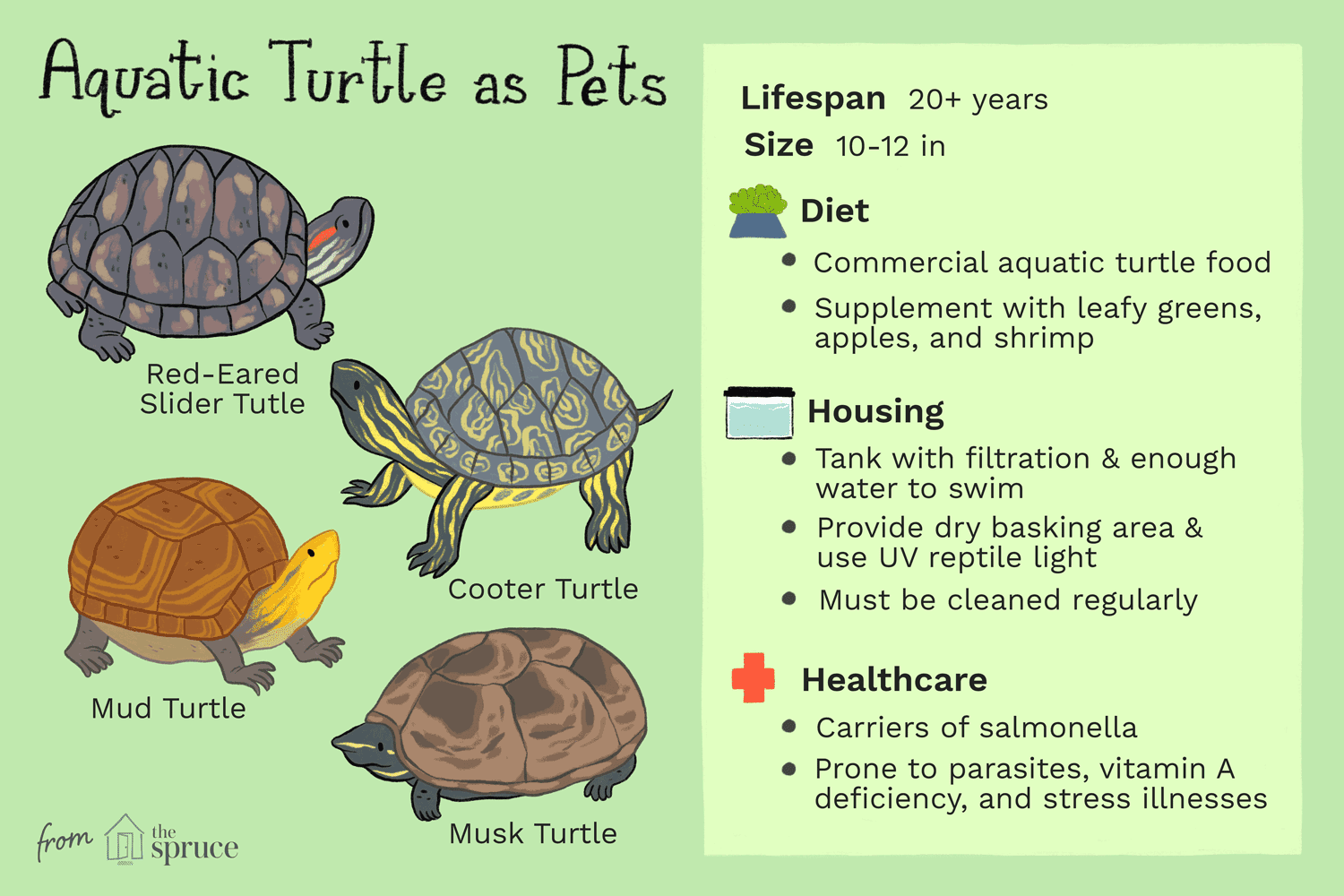Pet turtles require a high level of care and are generally not easy to take care of. Taking care of a pet turtle can be quite challenging due to the specific habitat requirements, specialized diet, and the need for proper water filtration and heating.
Turtles need an appropriate size tank with UVB lighting, a basking area, and clean water. Their diet should consist of a balanced combination of vegetables, fruits, and protein. Additionally, turtles require regular check-ups with an experienced reptile veterinarian to monitor their health and treat any potential issues.
Providing a suitable environment and meeting their intricate needs can be time-consuming and demanding. Therefore, owning a pet turtle requires commitment, knowledge, and willingness to devote significant effort to their care.

Credit: 2pawsupinc.com
The Basics Of Pet Turtle Care
Pet turtles can make wonderful companions, but taking care of them does require some knowledge and effort. When considering a pet turtle, it’s important to choose the right species that suits your lifestyle and living environment. Some popular pet turtle species include the Red-eared Slider, Eastern Box Turtle, and Painted Turtle.
Once you have selected the species, setting up a proper habitat is essential. Turtles need a spacious tank or enclosure with a basking area, UVB lighting, and a water source for swimming. The tank should be kept clean and maintained at an appropriate temperature and humidity level.
Feeding and nutrition is another crucial aspect of turtle care. Turtles require a balanced diet consisting of commercial turtle pellets, fresh vegetables, and occasional protein-rich foods like insects or cooked fish. It’s important to provide proper portion sizes and avoid overfeeding.
Overall, caring for pet turtles requires proper species selection, setting up a suitable habitat, and providing a balanced diet. By meeting these basic needs, you can ensure your pet turtle has a healthy and thriving life.

Credit: www.petful.com
Challenges And Responsibilities Of Owning A Pet Turtle
Owning a pet turtle can be a rewarding experience, but it also comes with its fair share of challenges and responsibilities. One of the key aspects of turtle care is maintenance and cleaning. Regular cleaning of the turtle’s enclosure is essential to ensure a clean and healthy environment. This includes removing waste, replacing water, and cleaning the filter. It is also important to monitor the temperature and humidity levels to maintain optimal conditions for the turtle.
Another important responsibility is healthcare and veterinary visits. Just like any other pet, turtles require regular check-ups to detect and prevent potential health issues. Consulting a reptile veterinarian can help you develop a proper feeding and care routine specific to your pet turtle’s needs.
Additionally, it’s crucial to note that pet turtles have a long lifespan. Some species can live for several decades, so you need to be prepared for a long-term commitment. This includes providing a suitable habitat, providing a proper diet, and ensuring a safe and enriching environment.
Owning a pet turtle can be challenging, but with the right knowledge and commitment, it can also be an incredibly rewarding experience.
Tips For Successful Pet Turtle Care
Pet turtles can be challenging to care for. However, with proper knowledge and commitment, successful turtle care is achievable. Here are some helpful tips to ensure your pet turtle thrives in its environment.
Educating Yourself About Turtle Care
When taking care of a pet turtle, it’s crucial to educate yourself about their specific needs. Turtles have unique requirements in terms of diet, habitat, and maintenance. Ensure you are aware of the specific species of turtle you have, as different turtles have different needs. Research their natural habitats to create a suitable enclosure. Learn about their dietary preferences, including the types and amounts of food they should be given. Understanding proper temperature, humidity, and lighting conditions will help ensure your turtle’s well-being.
Providing Enrichment And Exercise
Enrichment and exercise are essential aspects of pet turtle care. Create an enriching environment by adding natural elements like rocks, plants, and basking areas. Provide hiding spots to mimic their natural habitats. Regularly interact with your turtle by offering treats, gently handling them, or setting up obstacle courses. Turtles can also benefit from supervised time outside their enclosure. Allow them to explore a safe and enclosed space, engaging in natural behaviors like walking and swimming.
Monitoring Water Quality
| Water Parameters | Ideal Range |
|---|---|
| Temperature | 75-80°F (23-27°C) |
| pH Level | 6.8-7.8 |
| Ammonia Level | 0 ppm |
| Nitrate Level | < 20 ppm |
Water quality is crucial for the health of your pet turtle. Regularly test the water for temperature, pH level, ammonia level, and nitrate level, and ensure they fall within the ideal range. Use reputable water conditioners and filters to maintain optimal water quality. Regularly clean the tank and replace the water, ensuring it is free from debris and waste. Provide a suitable water depth for your turtle to swim comfortably, along with a basking area they can easily access.

Credit: www.petmd.com
Conclusion
Taking care of pet turtles may require some effort, but it is not an insurmountable task. By providing the right habitat, nutrition and attention, you can ensure the health and happiness of your shelled friend. Understanding their needs and taking proactive measures will contribute to a fulfilling and rewarding experience as a turtle owner.
With a little research and commitment, pet turtles can be a great addition to your family. So, don’t hesitate to embark on this wonderful journey of turtle care!





